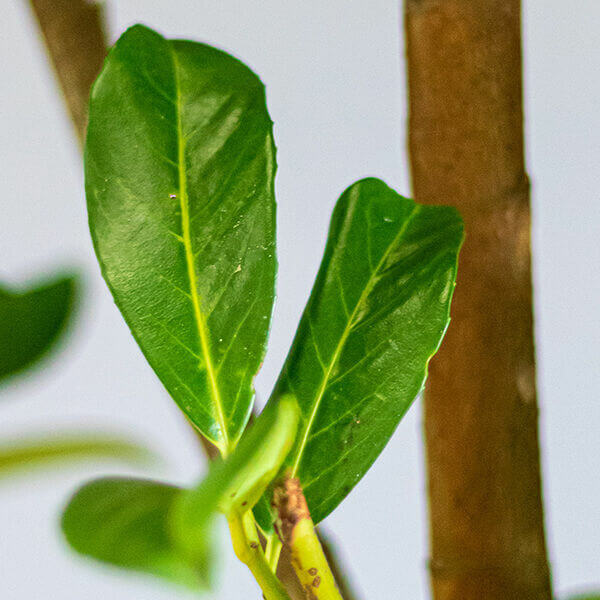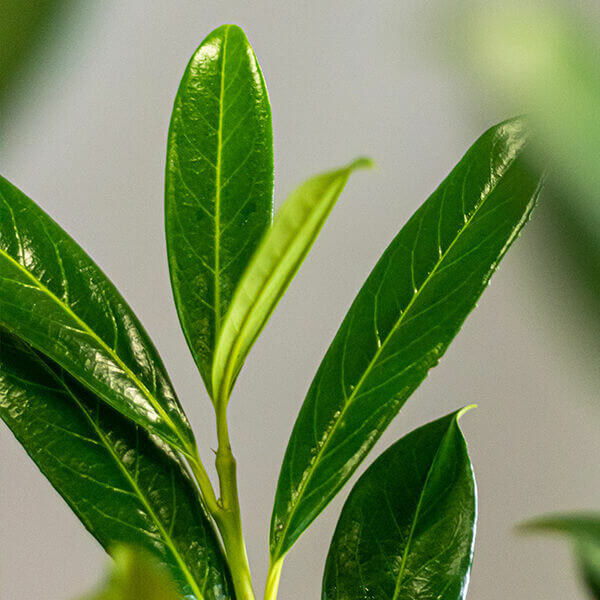Best Hedging Plants For Inspired Gardens
Best Hedging Plants For Inspired Gardens
Blog Article
Best Hedge Plants For Busy Roads
Enhance your garden's attraction with rich hedge ranges such as Yew (Taxus), Thuja, Laurel, Photinia, and Bamboo, celebrated for their structural stability and ecological benefits.
Yew and Thuja provide evergreen protection and winter resilience, while Laurel provides rapid growth and broad, aromatic leaves.
Photinia includes seasonal beauty with its dynamic red foliage, and Bamboo lends a low-maintenance, tranquil ambiance.
These hedges enhance air quality, reduce noise, and develop tranquil, personal spaces.
Proper planting, spacing, and maintenance make sure vigorous growth and eco-friendly consistency.
Explore how these rich ranges can raise your garden's beauty and well-being.
Secret Takeaways
Change Your Garden With Lush Hedge Varieties
- Select Yew for its dense, evergreen growth and unequaled longevity.
- Go with Laurel for its quick growth and broad leaves, guaranteeing fast personal privacy.
- Choose Photinia for its vibrant seasonal foliage, which turns a striking dark red.
- Use Bamboo for a low-maintenance, winter-hardy hedge with visual appeal.
- Area plants 2-3 per meter and prune frequently for optimum growth and health.
Popular Hedge Plants
When transforming a garden with lush hedge ranges, it's important to think about popular hedge plants such as Yew, Thuja, Laurel, and Photinia due to their special attributes and benefits.
Yew (Taxus) is highly esteemed for its longevity and dense, green development, making it a prime option for withstanding landscapes.
Thuja is noted for its evergreen foliage and robust winter season strength.
Photinia includes seasonal vibrancy with red leaves that darken with time, developing vibrant visual appeal.
Laurel offers rapid development and aromatic, broad leaves, perfect for fast privacy.
In Addition, Bamboo is an outstanding option for atmosphere, offering a low-maintenance, winter-hardy choice that improves the garden's aesthetic with its stylish, swaying canes.
These choices deal with a range of horticultural needs and preferences.
Advantages of Garden Hedges
Garden hedges provide a wide variety of benefits, making them an important addition to any landscape. These natural barriers are cost-efficient to carry out and offer significant wind defense, improving air circulation and adding to noise reduction. The thick foliage of hedges like Thuja and Beech guarantees privacy by blocking exposure, creating a serene and remote environment.
Hedges also play a vital function in microclimate regulation, supplying a stable environment that cultivates plant growth and decreases temperature variations. Their elaborate leaf structures filter toxins, improving air quality and adding to a healthier garden community.
Furthermore, hedges excel in sound decrease, absorbing and deflecting acoustic waves to lower ambient noise levels. This dual performance of providing both acoustic and visual privacy enhances the general harmony and aesthetic appeal of any garden.
Planting and Upkeep Tips
For a successful hedge, precise preparation of the planting location is crucial. Guarantee the soil has correct pH and drainage to support strong root development.
Space the plants properly for the chosen species. Water the hedge often throughout its preliminary growth phase, changing as required with seasonal modifications.
Implement a methodical insect control and illness prevention strategy, using chemical or natural treatments when needed. Frequently check for aphids, mites, and fungal infections.
Apply mulch to keep wetness and reduce weeds. Seasonal pruning promotes thick development and air circulation, important for plant health.
Following these guidelines will help you cultivate a lively, well-maintained hedge that improves the appeal of your garden.
Spacing and Trimming Standards
Spacing and Trimming Guidelines
Proper spacing and cutting are vital for cultivating healthy, aesthetically appealing hedges. Adequate spacing ensures each plant receives enough nutrients, light, and air flow.
Follow these standards for optimum hedge upkeep:
- Spacing: Position hedge plants 2-3 plants per meter to motivate robust development.
- Pruning Methods: Regular pruning is vital for preserving preferred hedge height and shape. Trim new growth in summer season and cut down older wood throughout winter.
- Seasonal Care: Adjust trimming schedules and methods according to seasonal requirements to make sure plant health.
- Hedge Height: Frequently screen and trim to maintain the preferred hedge height and achieve uniform visual appeals.
Complying with these actions will guarantee your hedge thrives, enhancing both the appeal and functionality of your garden.
Picking the Right Hedge
Picking the Right Hedge
Choosing the suitable hedge involves evaluating aspects such as fully grown height, foliage density, and environmental strength. Effective hedge plant selection needs comprehending each species' development qualities and site-specific adaptability.
For instance, Yew (Taxus) provides excellent durability and dense development, while Thuja is notable for its winter season durability. Additionally, thinking about maintenance requirements is vital; fast-growing species like Laurel or Privet need regular trimming, whereas low-maintenance alternatives like Bamboo or Ivy might be more effective for those seeking very little upkeep.
Ecological factors such as soil type, light accessibility, and wetness conditions ought to likewise guide the choice procedure. This cautious technique ensures the selected hedges will thrive, providing both practical and visual benefits to the garden landscape.
Shipment and Planting Advice
To ensure your hedge plants grow, they should be delivered by specialized carriers and planted promptly upon arrival.
Follow these important actions for effective planting:
- Soil Preparation: Enrich the soil with raw material to improve drain and nutrient content.
- Planting Depth: Create a trench twice the width and equivalent to the depth of the root ball.
- Watering Techniques: Water completely after planting, keeping the soil regularly moist but not filled.
- Mulching: Use a layer of mulch to retain moisture and suppress weeds.
Client Support and Service
Provided the vital function of timely assistance in horticultural pursuits, our customer support group is available six days a week through telephone, email, and social media to offer expert recommendations and quickly attend to any issues. Their devotion to fast response times ensures customer satisfaction by dealing with inquiries associated with plant health, ideal planting techniques, and maintenance schedules.

This comprehensive support group, reinforced by a stellar 9.3/ 10 client score, highlights our dedication to boosting the gardening experience for every single customer.
Frequently Asked Questions
How Long Does It Consider Hedge Plants to Develop?
Hedge plants usually need one to 3 years to become totally developed, with the specific period differing by species and growing conditions.
Effective care throughout this critical Additional resources period is essential for robust development. Constant watering, watchful weed control, and proper fertilizer application are pivotal in promoting strong root development.
For instance, fast-growing species like Laurel may establish faster, while slower-growing varieties such as Yew might take longer. Persistent upkeep speeds up the establishment process, resulting in thick and healthy hedges.
What Are the Finest Hedge Plants for Privacy?
The question of the very best hedge plants for personal privacy includes examining evergreen and deciduous choices.
Evergreen hedges like Thuja, Laurel, and Cypress offer year-round coverage, guaranteeing continuous privacy.
On the other hand, deciduous hedges such as Beech provide seasonal privacy, shedding leaves in colder months.
Secret maintenance tips for personal privacy hedges include regular cutting, fertilizing in spring, and appropriate spacing-- typically 2 to 3 plants per meter.
In addition, consistent watering and diligent weed elimination are essential for promoting healthy, thick growth.
Can Hedge Plants Attract Wildlife to My Garden?
Yes, hedge plants can bring in wildlife to your garden by supplying important advantages like shelter, food, and nesting websites, therefore boosting local biodiversity. For example, yew, holly, and laurel are exceptional for drawing in birds, while ivy supports a variety of pests.
However, it is necessary to note that there are some disadvantages, such as increased maintenance to handle bugs and regular maintenance. Carefully choosing and maintaining hedge varieties can assist balance these downsides and benefits, eventually promoting a lively and sustainable environment in your garden.
Exist Any Flowering Hedge Plants Available?
Yes, there are flowering hedge plants offered that can boost the beauty of your garden.
For example, Elaeagnus, likewise called Olive Willow, produces fragrant white flowers in the fall, adding a touch of sophistication.
Photinia, another popular option, showcases dynamic red leaves that develop into an abundant green, developing a dynamic visual effect throughout the seasons.
To guarantee these plants prosper, it's important to practice proper pruning methods and seasonal upkeep, such as cutting brand-new development in the summer season and cutting back in the winter.
These measures will help preserve the health and visual appeal of your blooming hedges.
How Do I Avoid Insects in My Hedge Plants?
To avoid insects in hedge plants, utilize natural insect control techniques and keep appropriate hedge care. Present helpful pests like ladybugs, which victimize hazardous bugs, to produce a well balanced environment.
Frequently inspect your hedges for signs of infestation and promptly remove any affected parts to avoid the spread. Make sure the health of your hedges by using well balanced fertilizers and offering sufficient water.
Utilize mulching to retain soil wetness and correct spacing to minimize plant stress and promote robust growth. These practices collectively assist in decreasing insect problems and maintaining a healthy hedge.
Conclusion
In essence, choosing the ideal hedge ranges such as Yew, Thuja, and Laurel can transform any garden into a tranquil sanctuary. These plants offer year-round greenery, boost visual appeal, and offer useful advantages like noise decrease and wind security.
Proper planting strategies, precise spacing, consistent watering, and seasonal cutting are crucial for optimal development.
Trusted delivery services and expert consumer support make sure a smooth experience from purchase to planting, making it simpler than ever to raise your outdoor area.
Garden hedges offer a plethora of benefits, making them an important addition to any landscape. These natural barriers are economical to implement and offer significant wind security, enhancing air flow and contributing to noise reduction. The thick foliage of hedges like Thuja and Beech guarantees personal privacy by obstructing exposure, developing a secluded and tranquil environment.

Pruning Methods: Regular pruning is necessary for keeping preferred hedge height and shape. Trim brand-new growth in summer and cut back older wood throughout winter.
Report this page